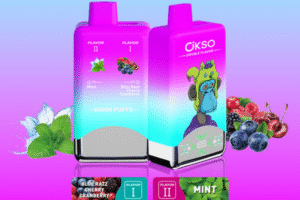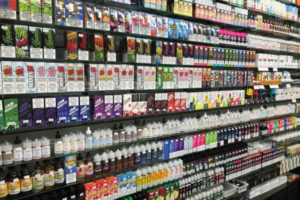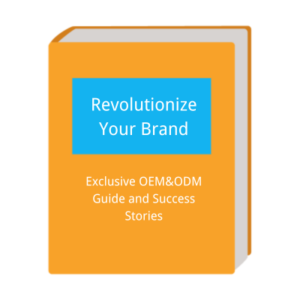When selecting a Chinese vape manufacturer, especially in the fast-growing and competitive vape market, several key factors must be considered to ensure quality, compliance, and profitability. Below is a complete list of factors that are critical in this decision-making process:
Quality Assurance
Manufacturing Standards: Look for manufacturers that adhere to high manufacturing standards, such as ISO 9001, which ensure that production processes are well documented and followed. These standards are critical to maintaining product quality.
Product Consistency: To ensure consistent product quality, manufacturers should install strict quality control procedures. This includes rigorous testing of raw materials, production processes, and finished products to meet specified quality standards.
Durability And Safety: manufacturers must focus on the durability and safety of their vape products. This involves the use of high-quality materials, safety compliance testing, and adherence to safety regulations in different markets.
Regulatory Compliance
Local And International Regulations: Manufacturers must be aware of changing vape regulations in different regions. This includes compliance with nicotine concentration limits, packaging requirements, and accurate labeling. Working with a manufacturer that understands and complies with these regulations is critical to avoiding legal issues.
Certifications: Certifications such as ISO (International Organization for Standardization), GMP (Good Manufacturing Practices), CE marking (European certification), and FDA approval (Food and Drug Administration) are indicators of a manufacturer's commitment to quality and compliance. Buyers should confirm that the manufacturer they choose has the relevant certifications for the target market.
Innovation And Product Range
Product Diversity: Reputable vape manufacturers should offer a wide range of products, including a variety of device types, flavors, and nicotine strengths. Product diversity allows importers to cater to different consumer preferences and market segments.
Innovation: Manufacturers with strong research and development capabilities are at the forefront of the industry. They can introduce innovative features, such as new vape technology or extended battery life, to make their products more attractive to consumers and importers.
Supply Chain Reliability
Production Capacity: Manufacturers' production capacity should be aligned with importers' needs. Importers must ensure that the manufacturers they choose can expand production to meet changing market demands without compromising quality.
Delivery Time: In the vape industry, where market dynamics are changing, timely delivery is critical. Manufacturers should provide realistic lead times and adhere to them to ensure that importers can meet their market deadlines.
Logistics And Distribution: Manufacturers with efficient global distribution networks streamline the import process. This minimizes logistical challenges for the importer and ensures that the product reaches the intended market.
Cost And Pricing Structure
Competitive Pricing: Importers should negotiate a competitive pricing structure with manufacturers that meets market expectations. Competitive pricing can help importers maintain profitability.
Volume discounts: Manufacturers often offer discounts for volume orders. Importers should explore these opportunities to reduce unit costs.
Hidden Costs: Importers should be aware of potential hidden costs such as transportation fees, duties, and taxes. These should be factored into the costing.
Market Reputation And Experience
Industry Experience: Manufacturers with a long history in the vape industry have a proven track record of reliability and product quality. They have met industry challenges and adapted to changing market conditions.
Customer Reviews And Feedback: Importers research and collect feedback from other businesses and consumers who have worked with the manufacturer. Positive comments and suggestions can increase confidence in a manufacturer's reliability.
Customer Support And Service
Communication: Effective and transparent communication channels are essential for resolving issues, clarifying requirements, and maintaining strong business relationships.
After-Sales Service: Manufacturers' commitment to after-sales service is reflected in the way they handle warranty claims, product issues, and customer inquiries. Prompt and reliable after-sales service enhances an importer's reputation with consumers.
Customized Services: Manufacturers that offer customized product options provide importers with a competitive advantage. Importers can work with these manufacturers to develop unique products that suit their target audience.
NDA (Non-Disclosure Agreements)
Protecting Intellectual Property: For importers with proprietary product designs or technology, signing a non-disclosure agreement is essential to protect intellectual property. This legal agreement ensures that the manufacturer keeps the importer's unique product confidential.
Market Trends And Consumer Preferences
Trend Awareness: Manufacturers who stay on top of market trends can offer products that meet changing consumer preferences. Importers should work with manufacturers who can adapt their products to these trends.
Consumer Research: Consumer research conducted by manufacturers can provide valuable insights into consumer preferences and behavior. This data-driven approach can guide product development and marketing strategies.
Technology Capabilities
Manufacturing Technology: Manufacturers that use advanced manufacturing technology can produce higher quality products and increase efficiency. Importers should inquire about the technologies used in the manufacturing process.
Quality Control Systems: The effectiveness of a manufacturer's quality control system affects product consistency. Importers should check the techniques and procedures used for quality control to ensure reliable product quality.







